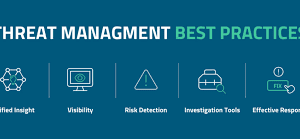AI in ITSM (Information Technology Service Management) holds remarkable promise—boosting efficiency, personalizing experiences, and forecasting issues beforehand. However, leveraging this promise goes beyond merely succumbing to the trends. It necessitates strategic planning and a well-defined approach. This piece will explore the choices, challenges, and benefits associated with adopting AI in ITSM.
Revamping Service Management
The three AI technologies making the largest impact on ITSM are Predictive AI, Cognitive AI, and Generative AI.
Predictive AI is transforming the Service Management sector. By analyzing historical data, AI can identify patterns and trends, which can be utilized in various situations, including predicting Resolution Time, Change Risk, and SLA Breaches. It enables organizations to take preventive measures, decreasing downtime and improving service reliability. Armed with actionable insights, IT teams can perform maintenance proactively to avert potential failures.
Cognitive Virtual Assistance (CVA) offers enhanced self-service capabilities and can handle multiple service requests simultaneously, providing immediate solutions to prevalent issues, unlike human agents. Available as a versatile chatbot online or through popular channels like Slack or Microsoft Teams, CVA allows users to independently manage routine tasks. This not only eases the burden on human agents but also allows them to concentrate on more complex responsibilities, leading to upgraded and reliable service delivery.
The impact of Generative AI has been significant in 2023 and is poised to reshape ITSM. By employing Natural Language Processing (NLP), Generative AI is changing ITSM through the automation of standard support functions like response creation and summarizing, thereby boosting user productivity. Virtual assistants powered by Generative AI can improve customer experiences through personalized service interactions based on an analysis of customer data and preferences.
But how does this impact the expenses?
Estimates suggest that the cost of an outage can vary from $2,300 to $9,000 for every minute, depending on the organization’s size and sector. Consider the potential savings if IT departments proactively maintain systems before failures occur.
Indeed, this goal is worth pursuing. Achieving this benefits can result in a more effective, adaptable, and economical IT service environment, ultimately improving business outcomes.
Obstacles to Integrating AI-powered ITSM
The journey towards AI-driven Service Management (AISM) is not without its challenges. A key difficulty is determining the most suitable applications for AI. Organizations frequently face hurdles in pinpointing the areas where AI implementation would be most beneficial. It’s essential to initiate use cases that promise quick victories and measurable advantages, helping to generate momentum and support for additional AI projects.
Another crucial challenge is selecting the appropriate AI technology. There are multiple options such as Machine Learning, Natural Language Processing, Generative AI, and Neural Networks. Organizations must assess their objectives properly before picking the most relevant technology.
The success of AI initiatives heavily relies on the quality and availability of data. Thus, issues with data may hinder the implementation of AI in ITSM. Companies may face data silos, which complicate the process of consolidating and analyzing information. Additionally, concerns surrounding data privacy and security may hinder the collection and use of data for AI-related goals.
Technical expertise and costs can cause hindrance in implementation of AI in ITSM. Often, the market faces a kill-gap of expert professionals in the domain, making hiring a difficult process. Infrastructure costs like procurement hardware and software, and their maintenance require deep pockets. This makes it difficult to implement AI for some organizations.
Ethical issues must also be addressed. The outcomes depend on the training data of AI models, and any flaws in them can result in inaccurate outcomes. It is essential to ensure transparency and explainability in AI decision-making processes to ensure accountability and fairness.
Moving Forward with ITSM
While the challenges abound, there are multiple ways for organizations to overcome them. As there are multiple vendors in the market, organizations must carefully select a partner who understands the organization’s needs and can provide the necessary expertise and support. A reliable partner can deliver proven, ready-made solutions that will support success and innovation, and help establish intelligent operations.
Establishing realistic goals and executing them consistently with careful consideration is critical for the success of AI initiatives. Organizations should ensure that every action is meticulously planned and contributes to the overall ITSM strategy. This should be accompanied with setting achievable objectives and working towards aligning the plan with them. Organizations must support ongoing learning and adaptability to maintain competitiveness in the field of AI-driven ITSM.
By addressing these challenges, businesses can utilize AI to enhance their ITSM. The application of AI in Service Management (AISM) leads to increased efficiency, heightened customer satisfaction, and reduced costs. While hurdles exist in implementing AISM, the benefits far outweigh the challenges.



































